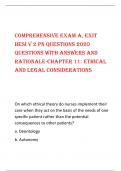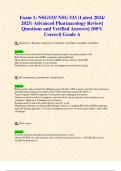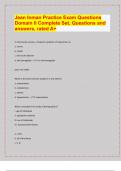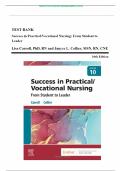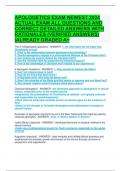Exam (elaborations)
NURS 611 Exam 4 Questions & Answers (test-bank) verified guide, Answers explained - Maryville University Of St. Louis.
- Course
- NURS 611 (NURS611)
- Institution
- Maryville University Of St. Louis
NURS 611 Exam 4 Questions & Answers Chapter 24: Structure and Function of the Reproductive Systems MULTIPLE CHOICE 1. The initial reproductive structures of the male and female embryos appear the same until which week of gestation? a. Third c. Twentieth b. Eighth d. Thirtieth 2. The absen...
[Show more]




